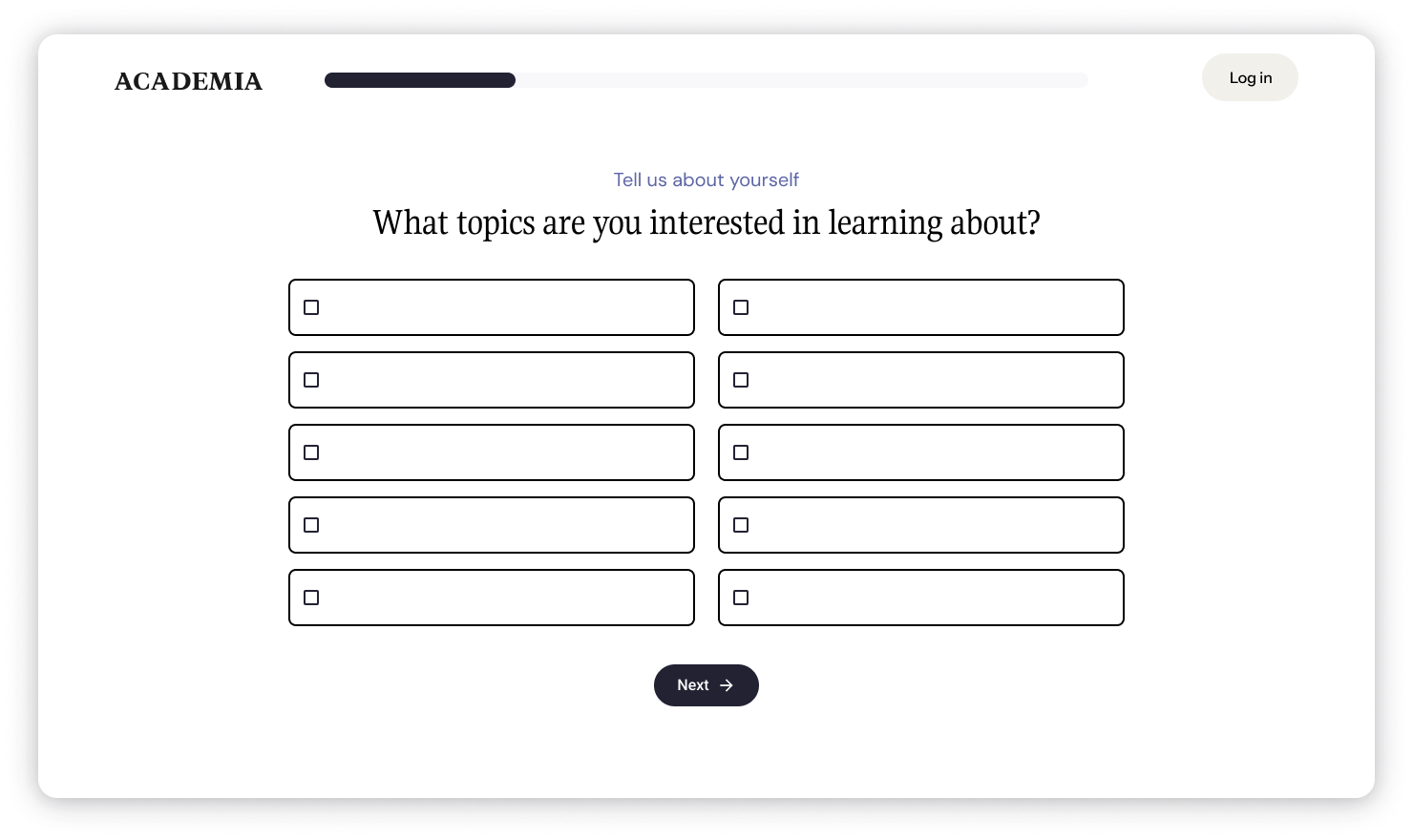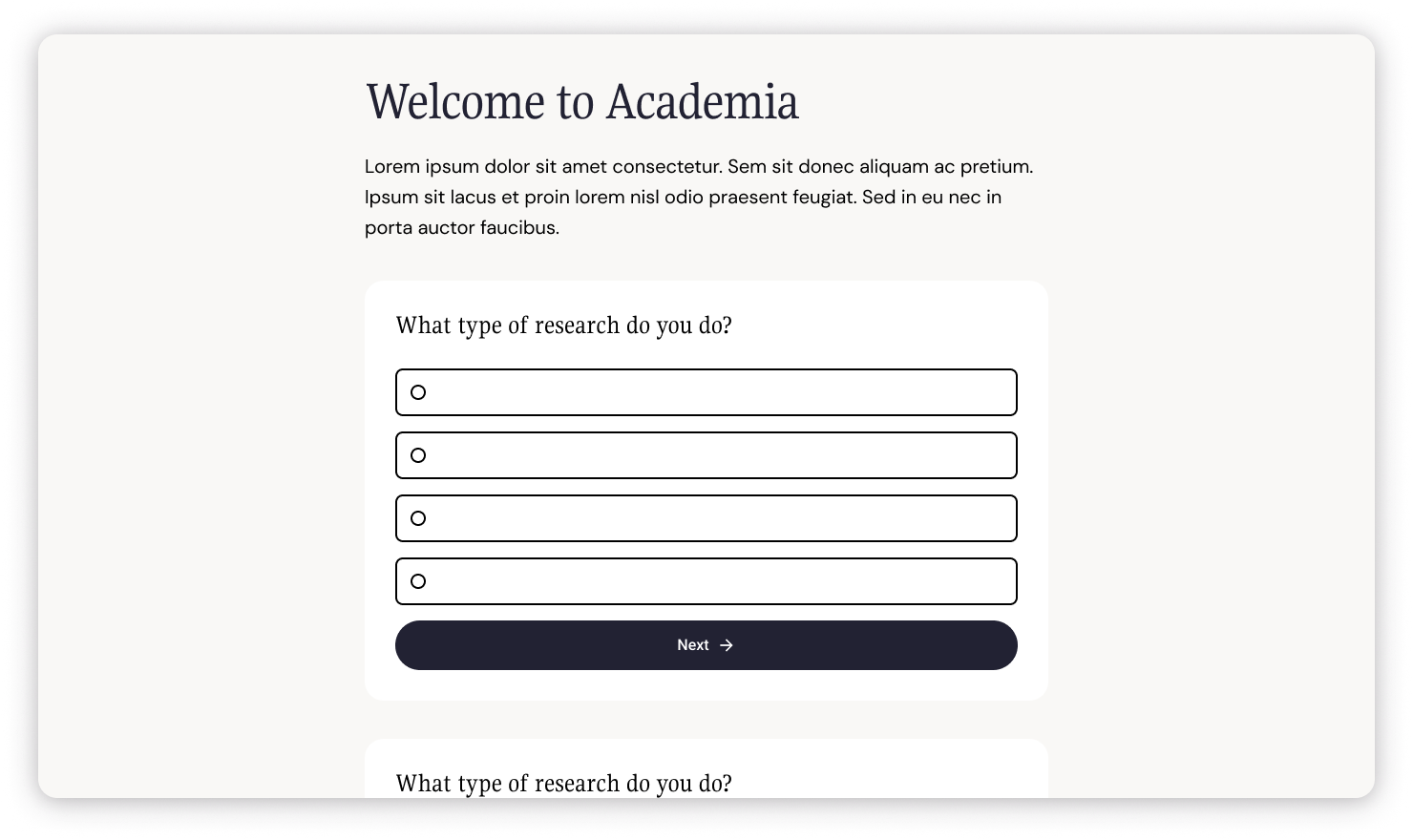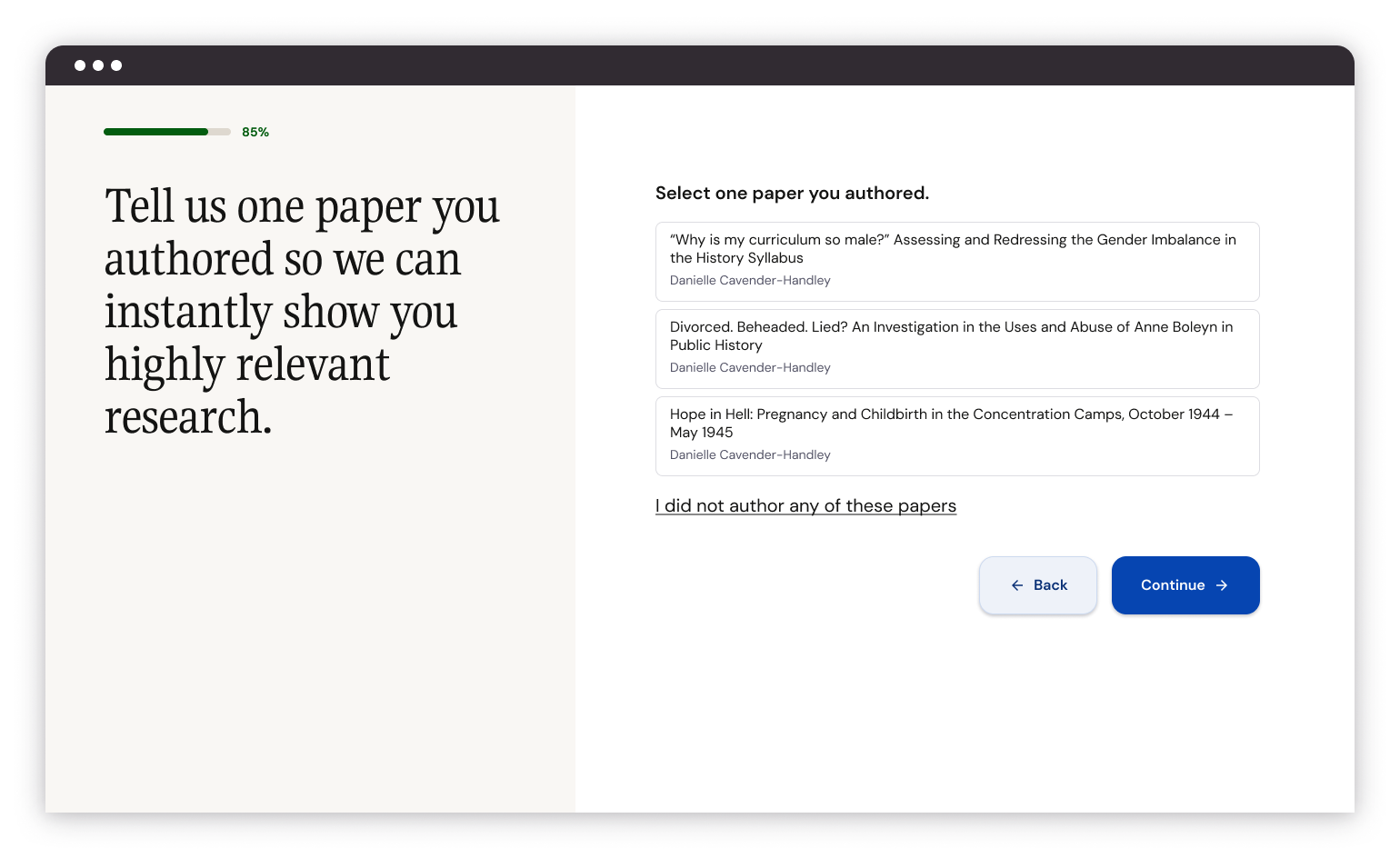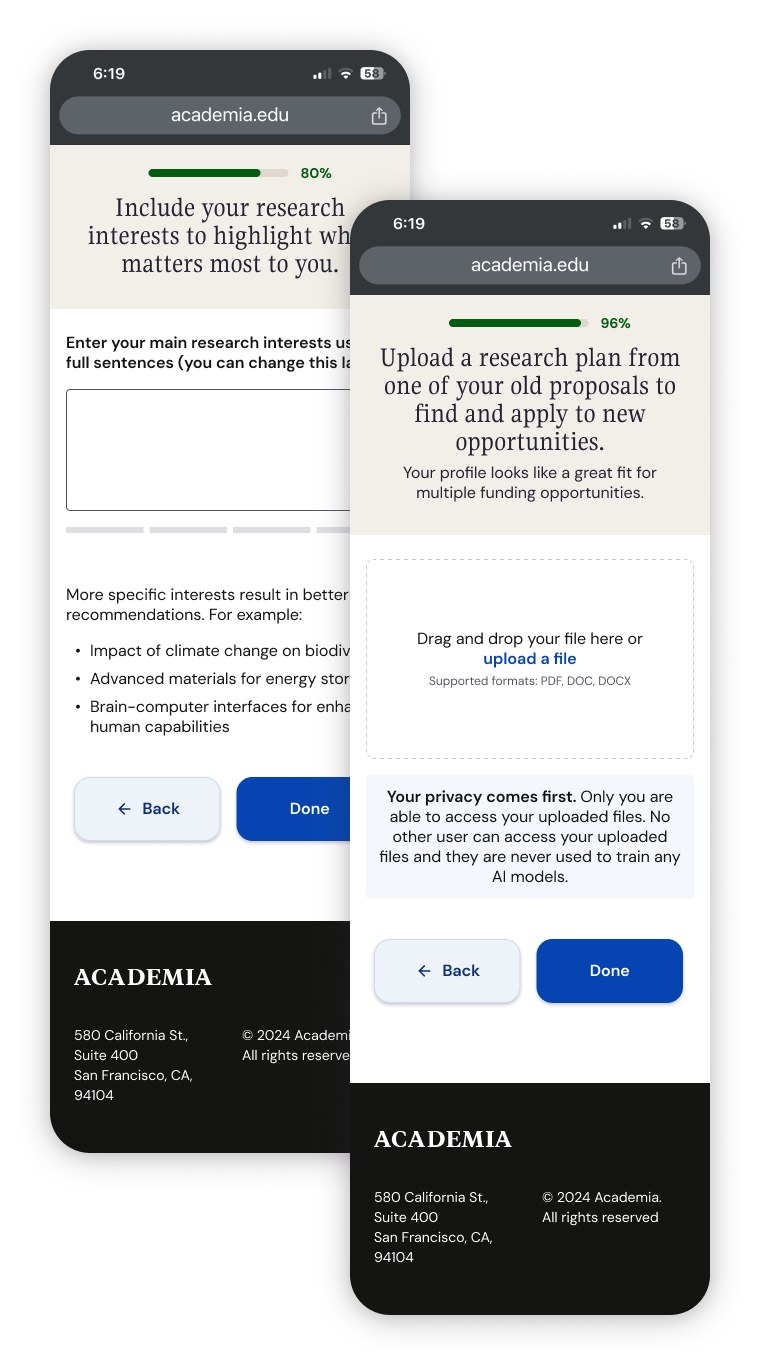Step 2
Onboarding question flow
Business goals
Academia’s primary new user funnel starts when someone clicks on a paper—often from Google Scholar. You can read and download research papers on Academia for free, but they require an account to be created. The current experience was tailored to maximize revenue based on this one-time interaction
The business was shifting to value long-term engagement. We needed to overhaul our onboarding strategy to nurture engaged users from their first interaction instead of determinedly trying to convert users into premium subscribers.
Key success metrics
The onboarding work was initiated to enhance the long-tail engagement of our logged-in users, especially to Academia's main homepage (“newsfeed”).
Early indicators for long-term engagement include:
Click-through rate (CTR) for signups.
Completion rate of onboarding that directs users to homepage as the final step, aiming to raise overall signup rates.
Constraints to consider
Preserve revenue neutrality on Premium upgrades from upsell
Project goals
Solve the complex and disjointed signup process
The original flow was a hodgepodge of
Create consistency across design and interactions
Ineffective introduction for users new to Academia
Explorations
I began by exploring format and quiz structure. For the first milestone, we needed to support our current onboarding questions.
Format ideas included: single page, split-screen with room for marketing (top right), full-screen, single question (top left), faux modal (bottom left), and long-scroll format (bottom right).
Milestone 1 test
We
Milestone 2 & beyond
Evolved the UI design
The updated onboarding flow was launched while the company was in the early stages of a rebranding exercise. It was designed in the spirit of the new brand direction but without the new branding being completed.
Once the new brand direction was more established, I updated the design of the question flow.
Answer pattern
As we tested new questions in the original format, I found the original answer pattern to be limiting.
Cross-product usage
Once we had an established pattern we were confident with, it became easy to test new questions and entirely new flows quickly.
Learn about the new user email next








